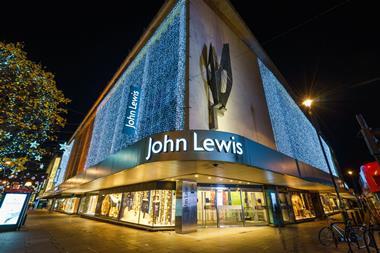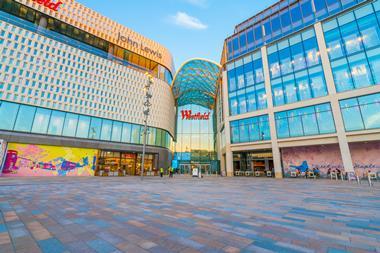Covent Garden’s retail offer has lost its way as it became known more as a tourist trap than a retail destination. Now, its landlord intends to rejuvenate the market. Ben Cooper reports
Street performers, the opera house, theatres, bars and restaurants; there are plenty of reasons why Covent Garden market is a famous tourist destination.
Some might say that such a vibrant part of London doesn’t require much in the way of improvement, but when it comes to the retail offer, Liberty International-owned landlord Capital & Counties (Capco), which bought the estate in 2006, has a different opinion.
While the area has got some unique stores, some believe that in recent years Covent Garden’s retail scene has fallen behind the stronger offers of other areas in the capital that are dedicated more to shopping than tourists.
DTZ associate director Mark Painter says a change of tone is exactly what the area needs. Beneficial though tourists are to retailers, the area’s immense popularity has had a negative effect on the retail offer. He says: “The problem you have there is that the more exciting it becomes, the more people go there, so you need more mainstream retailers. When you start chasing high rents you can end up killing the good things. Sometimes it is easier to do a deal with the highest bidder but that would destroy it. It has a balancing act to get right.”
Ted Baker has a flagship store on Floral Street, a stone’s throw from Covent Garden tube. Ted Baker southern regional manager Mike Irvine is welcoming Capco’s vision for the area. “I think it’s a fantastic plan,” he says. “Covent Garden always had that kudos years ago, but that feeling has gradually ebbed away. Floral Street used to be a really cool street and it’s definitely true that the high-end retailers have slowly moved away.”
Slowly, though, things are looking up for the retail offer in the surrounding area in Covent Garden outside of the market. St Martin’s Courtyard, a joint development between Shaftesbury and The Mercers Company, is due to open in spring next year. The 25-unit development has already attracted H&M sister brand Cos, and last month Retail Week revealed it is also the chosen destination for US fashion retailer Banana Republic’s second store (Retail Week, May 22).
The local factor
Capco is determined to get Covent Garden’s market back on the map as a top shopping destination. One of its main objectives is to entice London shoppers back to the area. Since it took the reins it has signed an interesting mix of brands, including independent jewellery brand Kabiri, international jeweller Carat, preppy US fashion brand Original Penguin – which has opened its first standalone store in the piazza – and Jack Wills. Things are looking up.
Many of the problems with the market stem from Covent Garden’s mass of smaller streets surrounding the main piazza and the dozens of landlords that have claimed a stake in the area since 1913 when the main estate was first sold off by the Duke of Bedford. Because there have been so many parties involved the retail offer has grown up relatively untamed, with a wide range of shops now occupying the streets.
Three years ago, Capco bought the Covent Garden Estate from Scottish Widows for £421m. Since then it has expanded its reach in the area to the point that the landlord now controls 750,000 sq ft of land around the market – which is most of Covent Garden.
It is this huge dominance of the area, lacking since 1913, that gives Capco the opportunity to finally improve the offer. It has the luxury of being able to take a unified approach to planning the retail. The landlord now intends to lift the retail in Covent Garden, in particular the area immediately in and around the piazza, to make it competitive with other shopping hotspots in the capital.
Former Selfridges marketing director Bev Churchill, who is now brand director of Covent Garden London, the company set up by Capco to oversee the improvements, says: “If we’re going to get the London shoppers back here we’ve got to give them something different in terms of tenant mix that’s going to be inviting.”
But tweaking an area as special as Covent Garden is different from a typical retail development. For a start, the vast majority of Capco’s estate is listed and can’t be altered. But even if it weren’t, says Churchill, the work is more about fine-tuning than anything else. “It’s going to take a very delicate hand in Covent Garden to develop it without killing it,” she says. “We want to keep the things that make it unique. Because it’s protected we can’t go around knocking buildings down.
It’s more about making improvements to the retail.”
David Kenningham, executive director at CB Richard Ellis, which is acting for Capco, says: “Providing a clear tenant mix strategy is exactly what Covent Garden needs. Arguably Covent Garden has over the years lost its focus as a retail destination and become better known as a tourist destination.”
Churchill admits that changing the retail scene is a “massive challenge” in itself. “It’s complicated and there are already very successful businesses in the area,” she adds.
The landlord estimates the works will take about seven years to complete.
With rents reaching up to £600 a sq ft Zone A at their peak, Covent Garden has become an expensive place to open up shop, which makes things harder for the smaller independents to get a foothold.
But it is small shops that Capco are trying to attract. The vision for the area is to bring more independent fashion brands to the north side of the market area and have a more luxury, Bond Street-style boutique set of shops at the other end.
To do this, and to counter the problem of high rents, Capco is also rethinking its letting strategy. To attract the types of retailers that it wants for its rejuvenated Covent Garden it is capping service charges, bringing in more turnover-based leases, taking a flexible approach to unit sizes and offering support in marketing stores when they first open up.
Unified message
Marketing, says Irvine, is a crucial tool that has been lacking from Covent Garden because of the lack of a unity in the land ownership. He explains: “We’d really welcome a unified view in taking it forward. Some of our frustrations have been that Regent Street and other places have come together and been very vocal in terms of promotion. We’ve definitely noticed that since Regent Street has been promoted more, footfall [in Covent Garden] has dropped off slightly.”
In terms of the type of retail brands that can be expected to trade in the piazza in the future, Capco is keeping its cards close to its chest. Rumours abound about a host of luxury brands that are due to sign for stores in the area, as well as an Apple store, which is thought to be opening in the heart of the market.
Gift retailer Octopus has a store in the piazza. Marketing director Rupert Kenyon welcomes Capco’s plans for the area, but adds that in the move to lure London shoppers to the area it is vital that this new proposition is not created at the expense of the tourists.
“Capco are doing a great job at maintaining strong levels of tourist trade in the Piazza, probably somewhat assisted by the sterling exchange rate. This is benefiting Octopus well, but our brand is equally effective in the more premium home markets that we believe Capco are aspiring to,” Kenyon says. “Octopus really look for customers with joie de vivre and the broader Capco make the proposition of Covent Garden, the better it should be for us.”
The task of improving the retail scene in one of London’s most famous destinations is one that will require an imaginative but delicate approach. There is a risk that much of Covent Garden’s charm could be lost through overzealous development. Reassuringly, Capco so far is bearing this in mind.
Retailers signed up since 2007
Kabiri
Carat
Tea Palace
Original Penguin
Opus
Jack Wills
Sunglass Hut


























1 Reader's comment